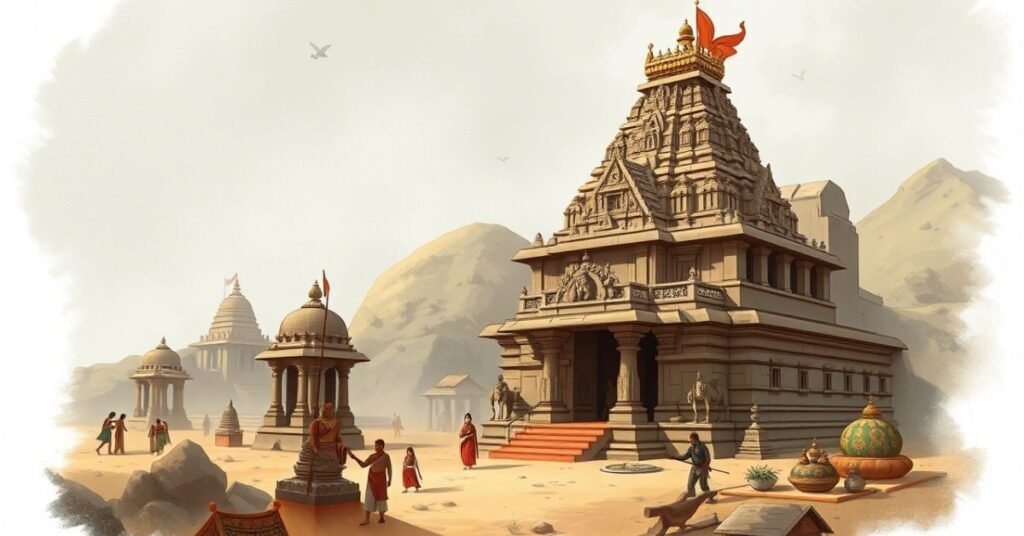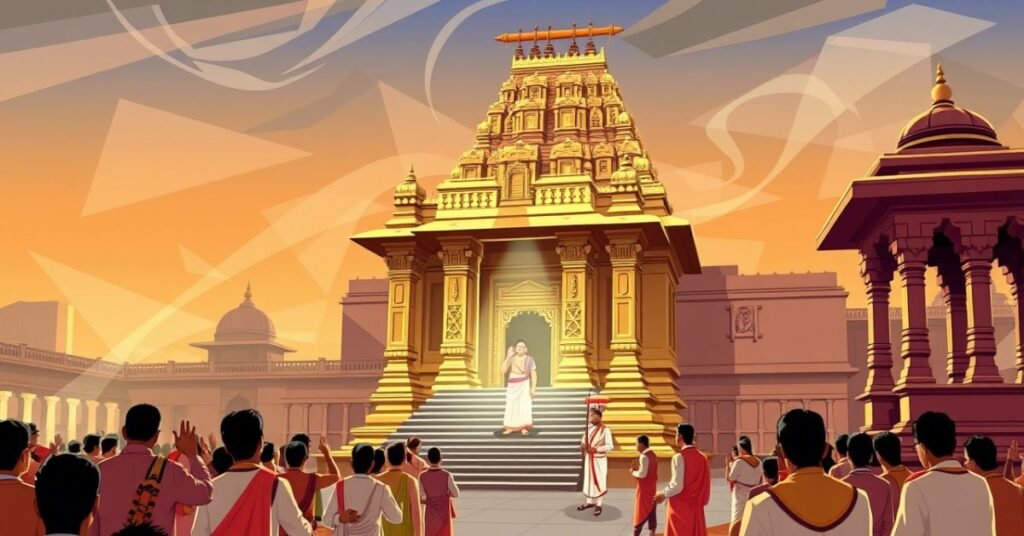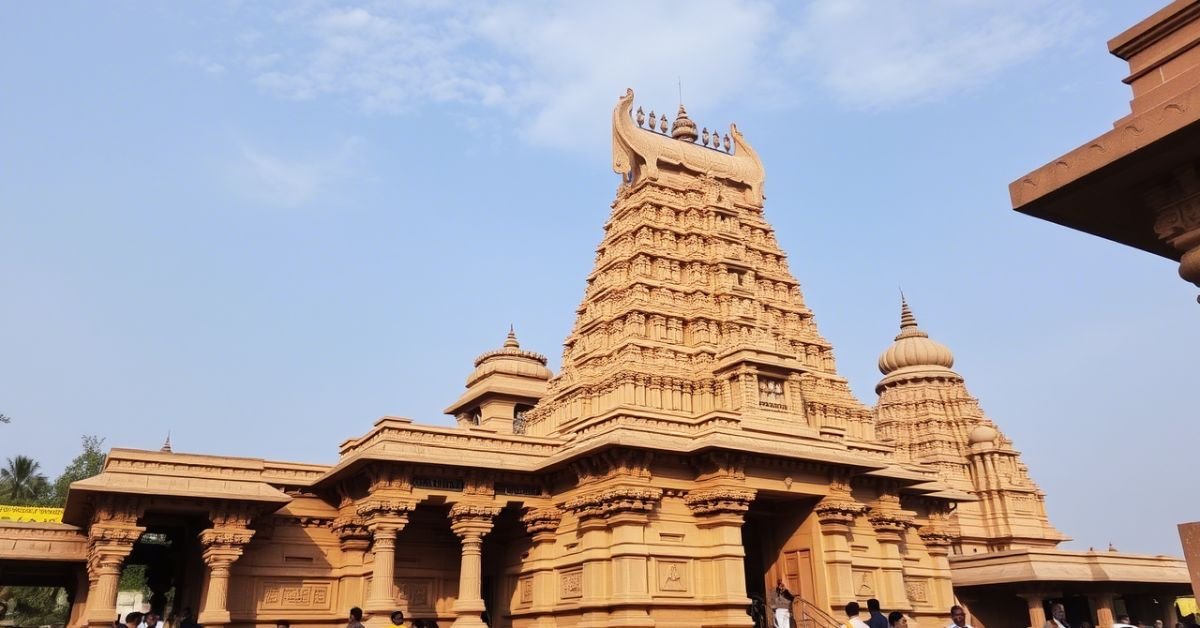Lingaraj Temple History: The Ancient Marvel of Bhubaneswar
One of the most famous and oldest temples in Bhubaneswar, Odisha, is the Lingaraj Temple. This temple stands as a symbol of ancient Indian architecture and religious tradition. The temple is dedicated to Lord Shiva, known here as Lingaraj. Its history dates back many centuries, and it remains an important place of worship for millions of devotees every year.
The temple is not only a religious site but also a great example of Kalinga architecture. The beautiful carvings, towering spires, and grand design showcase the skills of ancient craftsmen. It is the Lingaraj Temple that tells the story of devotion and culture that once flourished in Odisha.Understanding its history gives a deeper insight into India’s rich heritage and spirituality.
Origins of Lingaraj Temple History
The roots of Lingaraj Temple trace back to the 11th century AD during the reign of the Somavamsi dynasty. It is believed that the temple was built between 1040 and 1065 AD, making it nearly 1000 years old. The temple was constructed to honor Lord Shiva, who is worshiped here as Harihara, a form that combines both Shiva and Vishnu.

The temple grew over time, receiving contributions from several kings and rulers. Many historians believe the temple also integrates some parts of older shrines, indicating that the site was sacred even before the current structure was built. The temple stands as a living proof of the powerful religious and cultural atmosphere of medieval Odisha.
Architectural Style of Lingaraj Temple
Kalinga architecture is evident in the Lingaraj Temple. This style is known for its tall, curving towers called “Shikharas.” The temple’s main tower rises to about 180 feet, making it a towering presence in Bhubaneswar’s skyline.
The temple complex includes several smaller shrines, a large courtyard, and beautifully carved walls. These carvings show scenes from Hindu mythology, gods, goddesses, and nature. The entire structure is made from sandstone and laterite stone, which has lasted centuries without losing its charm.
The temple’s architecture not only pleases the eyes but also serves a spiritual purpose. The layout is designed to guide worshippers on a journey from the outer world into the sacred space of the inner sanctum where the main deity resides. This design reflects deep religious symbolism and ancient Indian knowledge of space.
Religious Importance of Lingaraj Temple
Lingaraj Temple holds a special place in Hinduism as a powerful center of worship. Lord Lingaraj represents Shiva, one of the principal gods in Hindu belief, who symbolizes destruction and regeneration. The temple attracts thousands of devotees who come to seek blessings and spiritual peace.

One unique aspect of this temple is the worship of Harihara, a combined form of Shiva and Vishnu, showing the harmony between different Hindu traditions. This unity is rare and highlights the temple’s role as a place of inclusiveness.
The temple also hosts major festivals such as Maha Shivaratri, which draws huge crowds. During this festival, the temple becomes the center of vibrant rituals, music, and prayers. Devotees believe that visiting the temple on this day brings good fortune and cleanses sins.
The Role of Lingaraj Temple in Bhubaneswar’s Culture
Lingaraj Temple is more than a religious site; it is a cultural icon of Bhubaneswar, often called the “Temple City of India.” The temple contributes to the city’s identity and attracts tourists and scholars interested in history, religion, and art.
Over the centuries, the temple has inspired many local traditions, art forms, and festivals. It also plays a key role in preserving the language, music, and dance associated with Odisha’s heritage.
The temple’s presence has helped Bhubaneswar become a hub for spiritual learning and cultural exchange. People from different parts of India and the world visit here to experience its peaceful environment and deep-rooted traditions.
Table: Key Facts about Lingaraj Temple History
| Feature | Details |
| Location | Bhubaneswar, Odisha |
| Built in | 11th century AD (c. 1040-1065) |
| Dedicated to | Lord Shiva (Lingaraj) |
| Architectural Style | Kalinga |
| Height of Main Tower | About 180 feet |
| Main Festival | Maha Shivaratri |
| Special Deity Form | Harihara (Shiva-Vishnu combined) |
| Material Used | Sandstone and laterite stone |
Preservation and Current Status of Lingaraj Temple
The Lingaraj Temple is protected as a heritage monument by the Archaeological Survey of India. It undergoes regular maintenance to preserve its structure and carvings. Efforts are made to keep the temple clean and accessible for devotees and visitors.
Modern facilities support the growing number of pilgrims, but the temple still maintains its ancient charm and spiritual atmosphere. The temple authorities also organize cultural programs and religious events to keep the traditions alive.
As a living monument, Lingaraj Temple continues to connect the past with the present. It remains a symbol of faith, art, and history for future generations.
FAQs About Lingaraj Temple History
What is the significance of the name Lingaraj?
The name “Lingaraj” means “King of Lingas,” referring to Lord Shiva in his form as the supreme god of destruction and regeneration.
When was the Lingaraj Temple built?
The temple was built in the 11th century AD, around 1040 to 1065, during the rule of the Somavamsi dynasty.
What makes the temple’s architecture special?
Its Kalinga style features tall towers, detailed carvings, and a unique layout symbolizing a spiritual journey towards the inner sanctum.
Why is Lord Shiva worshiped as Harihara in this temple?
Harihara represents a fusion of Lord Shiva and Lord Vishnu, symbolizing the unity of two major Hindu traditions.
What festivals are celebrated at Lingaraj Temple?
Maha Shivaratri is the most important festival, attracting large crowds for prayers, rituals, and celebrations.

Hamza Ahmed is a skilled SEO expert specializing in the travel industry. He helps travel brands grow online through smart content and search strategies.


